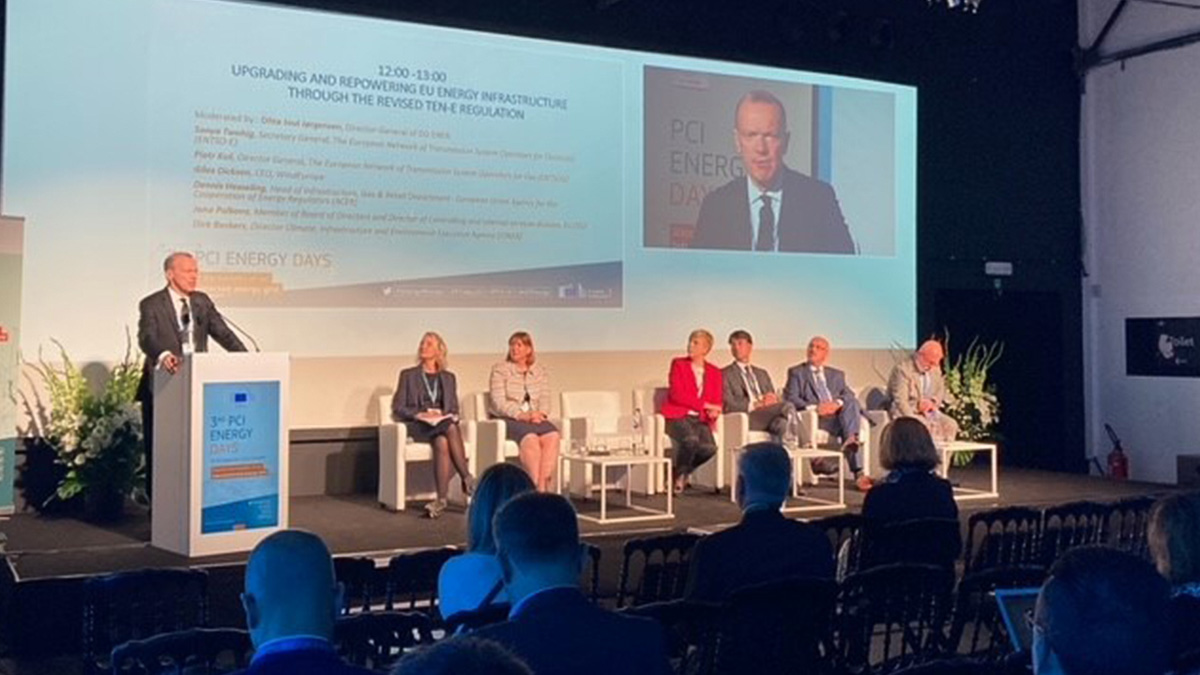29 September 2022
The EU’s future-proof electricity grid will need many more onshore and offshore interconnectors

WindEurope took part in the European Commission’s Projects of Common Interest (PCI) Energy Days – which are dedicated to the practical implementation of the EU’s PCIs for energy.
These PCI projects include onshore and offshore cross-border interconnectors and large energy storage assets. The focus of the event was the revised Trans-European Networks for Energy Regulation (TEN-E), energy security and the acceleration of renewable energy integration into the grid. To reach the EU’s climate goals and facilitate the expansion of renewables both onshore and offshore grids need a thorough upgrade.
The Commission now has its revised TEN-E Regulation in place which sets out rules for the timely development and interoperability of trans-European energy networks. EU Member States are now required to agree at sea basin level on joint offshore energy targets and develop joint Offshore Network Development Plans. Europe needs to optimise all processes to expand the pipeline of PCIs as fast as possible, both onshore and offshore. Both interconnectors and energy storage will be crucial for EU citizens to rely as much as possible on renewables.
For offshore wind a big focus should be on hybrid offshore wind farms – offshore connections linking wind farms or connecting them to two or more countries. We should be building these whenever it is feasible. Hybrids pool generation and transmission assets to save money and space. And they improve energy flows between countries. Europe only has one hybrid offshore wind farm today. Governments, TSOs and wind farm developers should accelerate their joint planning of hybrids as quickly as possible.
Some hybrids are already being planned and recognised as PCIs. The hybrid ELWIND offshore wind farm between Estonia and Latvia has been rewarded this status. So has the North Sea Wind Power Hub (NSWPH) which will link the energy systems of North West Europe while integrating large amounts of new offshore wind.
But we need to go further. There is still no clear legal definition of what an offshore hybrid is. The European Parliament has proposed a definition but this does not treat transmission and generation infrastructure as a single asset. For accelerating planning and permitting it is crucial that it does.
WindEurope CEO Giles Dickson said: “Hybrid offshore wind farms will play an important role in our future energy systems. They will optimise energy flows between countries and save money and space. The European Commission already recognises this and has given two hybrid projects the status of Projects of Common Interest. But this is not enough. Offshore hybrids need a clear legal definition which treats the transmission and generation infrastructure as one asset. If this is not done right the planning and permitting of hybrids will be held back.”

